Plywood armchair: varieties of design and do-it-yourself creation
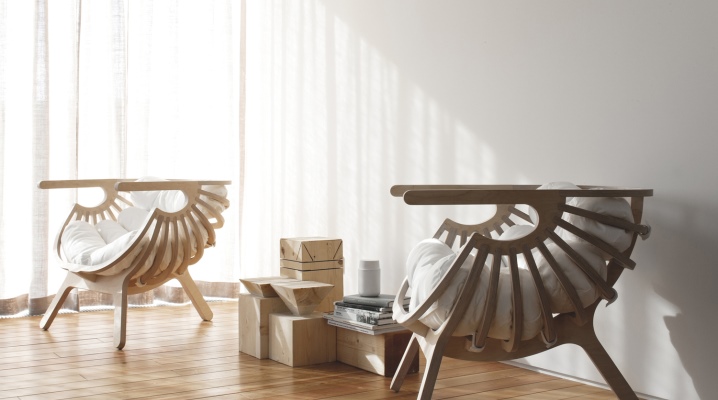
A novice master can make a simple and comfortable plywood chair for a summer residence. A specialist has enough skill and capabilities to create an exclusive spectacular product that will decorate the living room. In the article we will tell you what types of chairs are and how you can make them yourself.
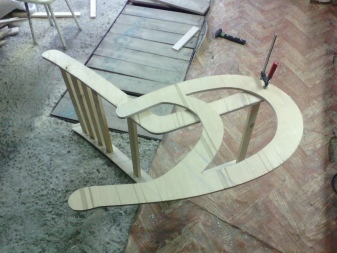
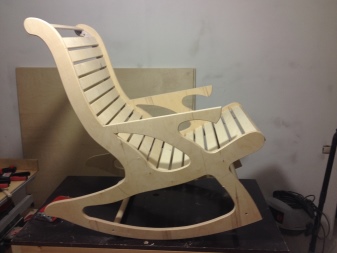
Types of chairs
Today we will talk about armchairs, which are not found in every home. Their uniqueness lies in the material used. If you wish, you can independently make products from a bent surface or from lamellas (strips). Designer products are much more complex, recently parametric plywood furniture has been popularized. It contains extraordinary lines - smooth, curved, streamlined, but at the same time does not lose functionality.

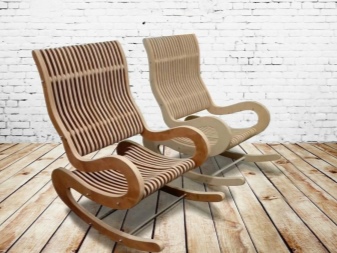
For their products, designers choose hypoallergenic safe materials; they can be installed in all living rooms, including children's rooms.
Plywood armchairs are varied in shape, size, purpose and methods of execution. Conventionally, they can be divided into fixed and rocking chairs. Let's try to understand their diversity using some examples.
- Designer rotating model created by cross-folding of lamellas.
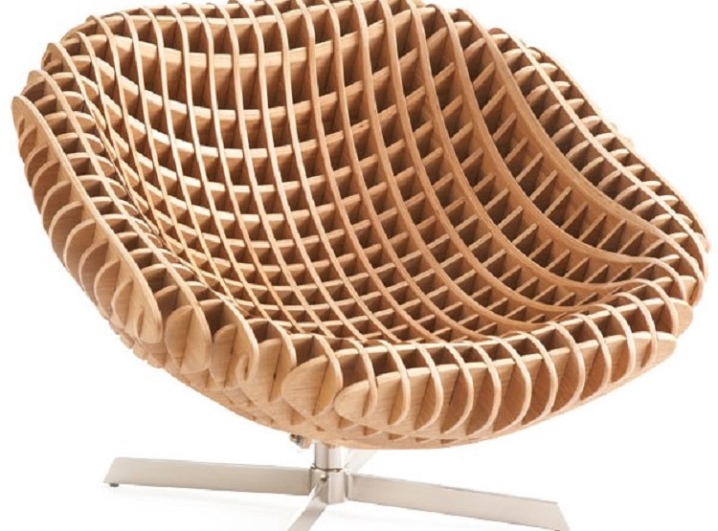
- Exclusive set of furniture made of plywood in the form of an armchair and a stool.
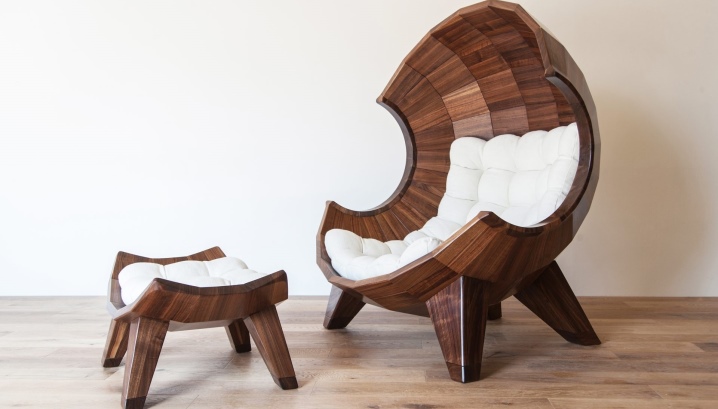
- The product is made of glued plywood sheets joined in a thick solid wood.
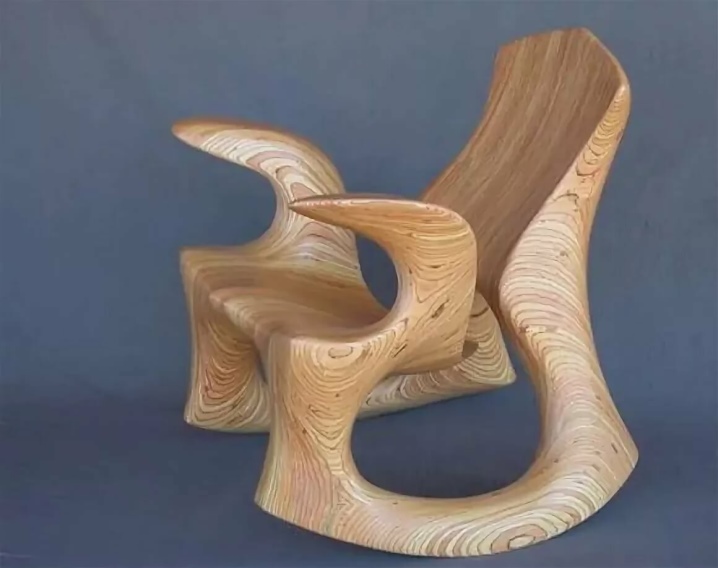
- An example of a parametric plywood chair. It is produced in the form of a wave, which allows it to swing without resorting to runners.

- Two-tone fixed model made from small figured elements.
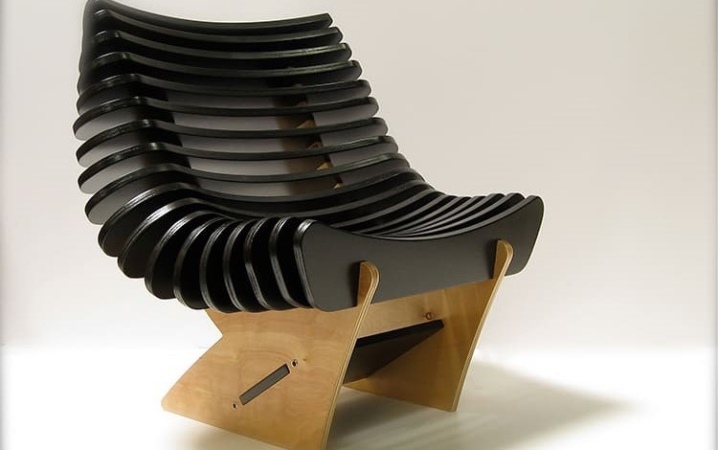
- The standard product is "shell". It is installed on 3 or 4 legs.
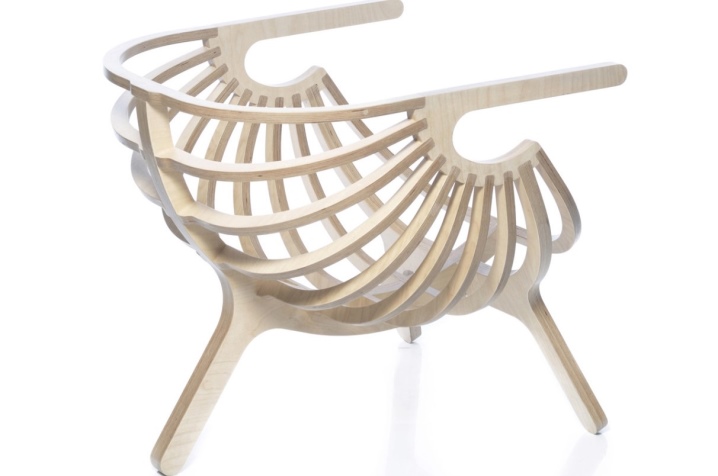
- Computer chair made of plywood fragments.
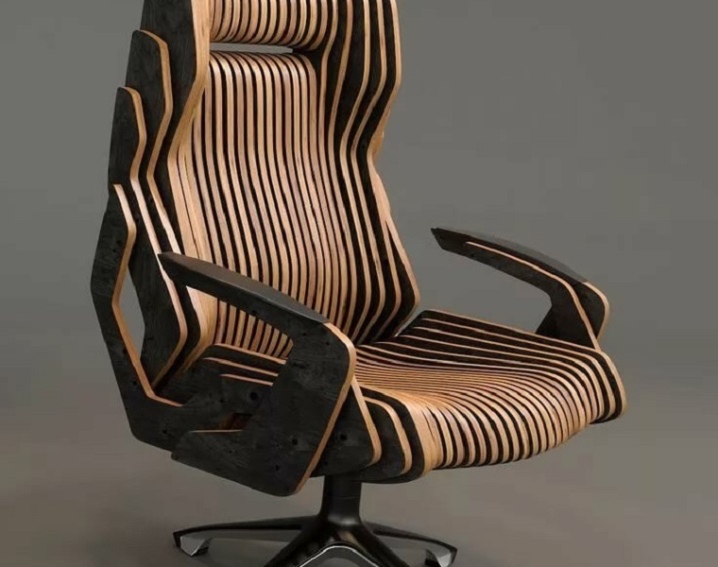
- Model with a "house" for pets.
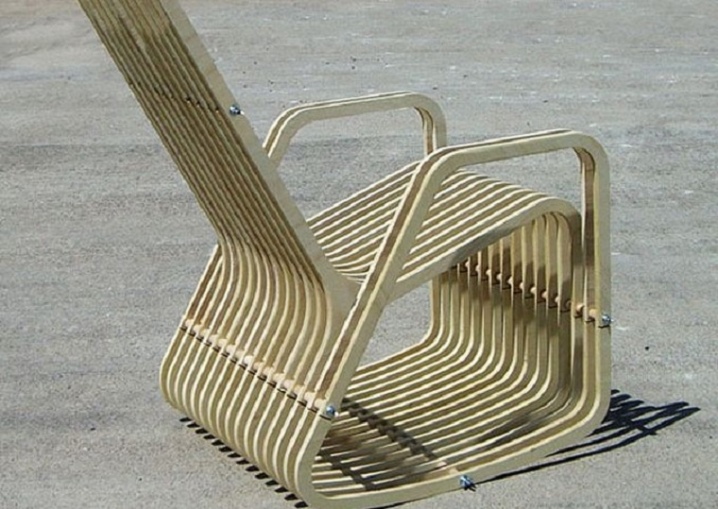
- An example of how you can decorate a product with a soft seat and back.
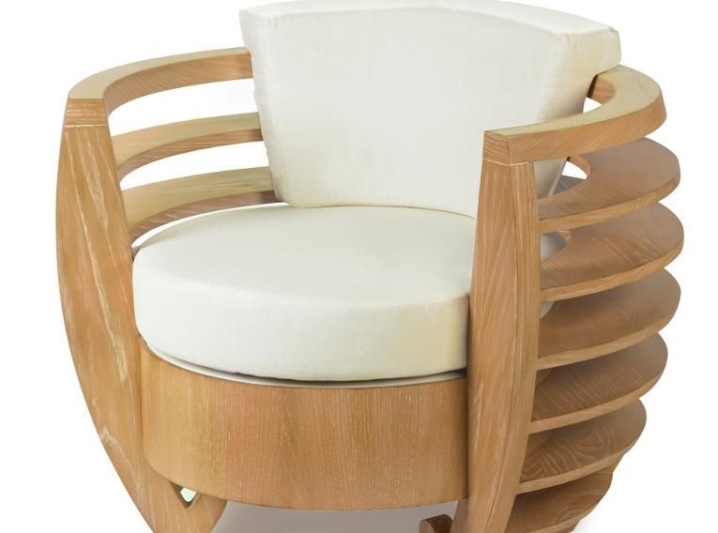
- Carved model of a rocking chair.
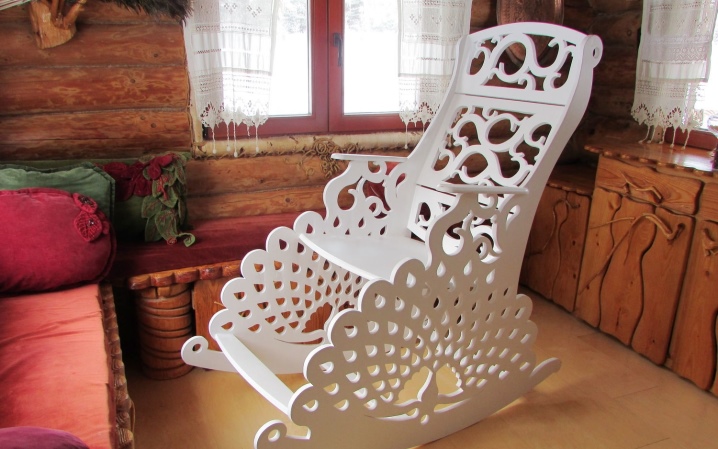
- Dual parametric product design.
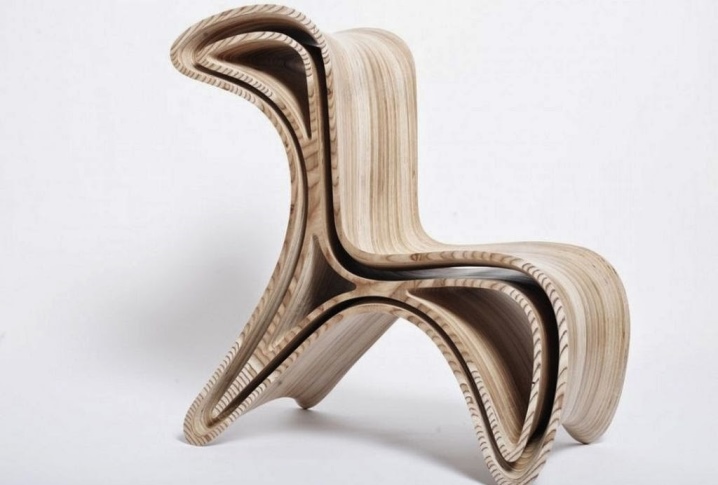
- The original model of the author's chair on three supports.
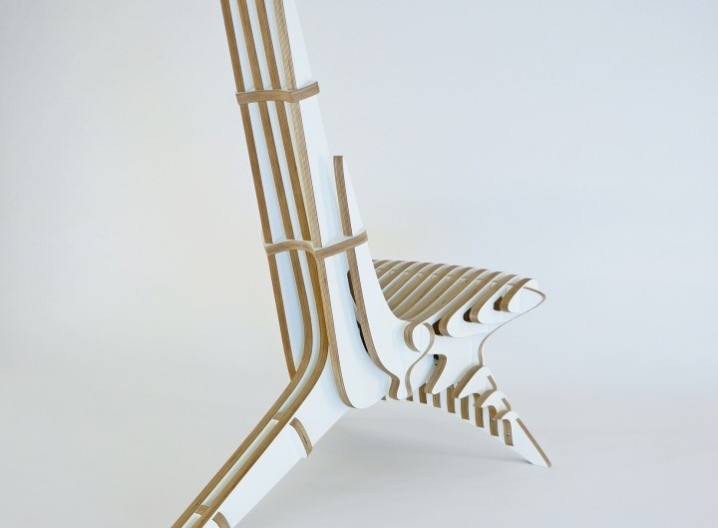
- An extravagant piece of bent plywood for modern interiors.
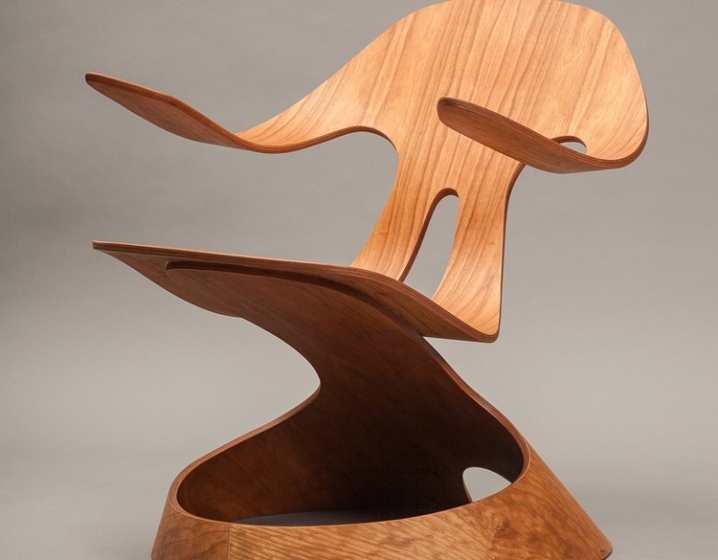
- Rocking chair on runners, in a contrasting design.

- Birch plywood throne chair.
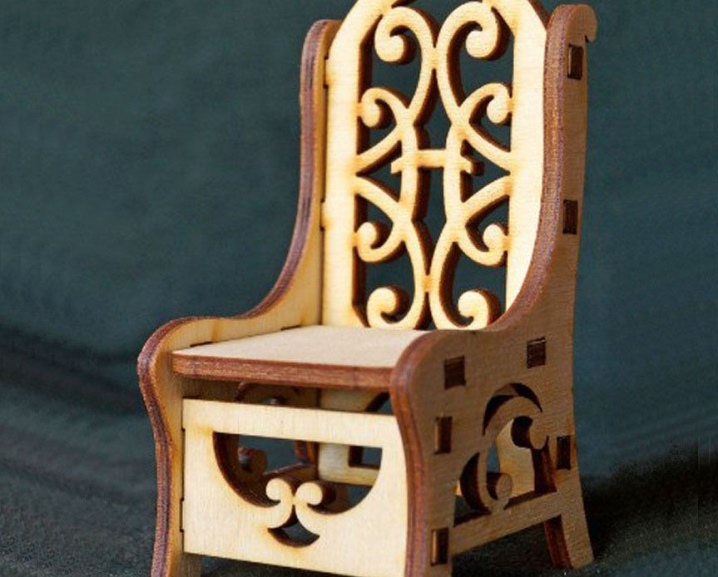
- A beautiful unusual model, but not designed for heavy weight.

Selection and preparation of plywood
Plywood is a product made from several layers of wood veneer, and the more there are, the thicker and stronger the sheet. The veneer is glued with a special compound, turning into even reliable sheets. In many ways, the strength and durability of the product depends on the glue, so the product should be purchased from trusted manufacturers. Quality plywood has high technical characteristics. Despite its low weight, it is strong enough and belongs to an environmentally friendly product. Correctly processed material is wear-resistant, resistant to moisture and mechanical stress.
The product is readily available, purchased at any hardware store and is inexpensive. The material is freely processed, it is easy to saw, glue, paint or varnish.
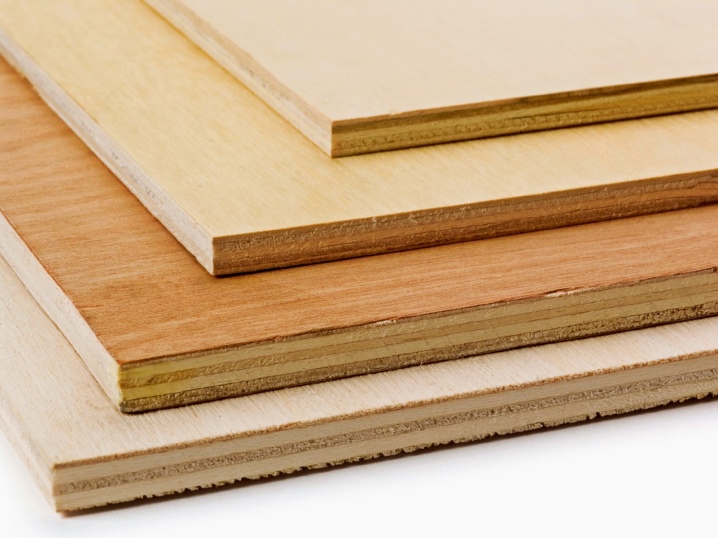
You can cut or burn beautiful patterns on it. Plywood is made from veneer of different trees. For example, a product made of coniferous varieties has a beautiful structure and a unique ornament. Birch has a rich, even tone, it is resilient and elastic. When choosing plywood for a product, you should remember that there are 3 types of plywood:
- completely unpolished;
- processed on one side;
- processed on both sides.

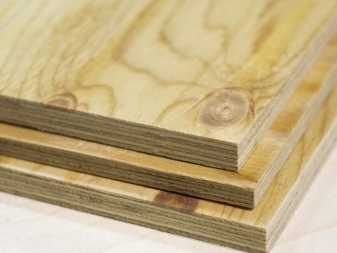
To create a chair, it is necessary to purchase the third option, and its thickness should be at least 15-20 mm. Besides, you need to pay attention to the quality of the material... It should not be soggy or rough, the fibrous texture often cracks and chips during processing. The chair may need sheets of different thicknesses, thin (1.5 mm) are processed by hand, for a thick surface, an electric jigsaw is used. A cross section can be made with a sharp working knife along the marked contours.
Necessary materials and tools
Before getting down to business, you need to start preparing a working tool and material. To work on the chair you will need:
- durable plywood sheet, at least 20 mm thick;
- manual and electric jigsaw;
- drill;
- screws and nails with bulky heads;
- emery cloth for grouting;
- stain, varnish or paint;
- joiner's glue.
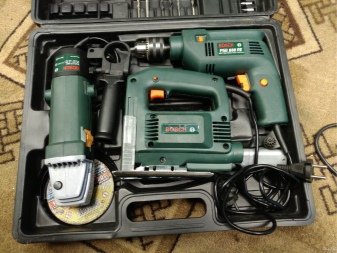

You will also need a tape measure and a marking pencil. When the tools and material are collected, you can go directly to work on the chair.
Work instructions
A plywood chair is quite realistic to make with your own hands. First of all, you need to make a drawing and determine the dimensions. If you don't want to fantasize, you can find a ready-made scheme on the Internet. As an example, consider a model of a rocking chair made from individual strips of plywood.
- According to the drawing, a paper template is prepared, then applied to a solid sheet of plywood and each detail is drawn. The template is transferred to the working material as economically as possible.
- Every detail is carefully cut with a jigsaw.
- Emery paper should be used to process the saw cut.
- All elements are covered with a special antibacterial solution with a brush. Once dry, wood glue is applied to all surfaces to help prevent parts from spilling out during assembly.
- Holes for screws and nails are marked and drilled on the details.
- The frame for the seat is assembled from the prepared parts.
- Plywood slats are attached to the frame.
- All the same is done with the back.
- Runners (4 pieces) are cut with an arc.
- The seat and runners are held together by cut plywood connectors.
- Then the back is attached. It can be installed permanently or with the help of adjusting parts, made movable (capable of changing the slope).
- In the last step, handrails are mounted to the seat frame.

When the main work on the chair is finished, the moment of finishing comes. It all depends on the purpose of the product. If it is intended for a gazebo in the garden, it should be covered with an anti-fungal compound and protected with a paint and varnish layer. For a room, the chair can be given a more homely look: upholstered with fabric or leatherette, use filler for the seat and back, add coziness with pillows.
The upholstery of the product should be started from the back, nailing the fabric with small nails. If there is no desire to be engaged in the arrangement, but comfort is necessary, we advise you to take a closer look at the finished euro-cover, suitable in size, it will completely repeat the shape of the model. Making a chair with your own hands, you can not only make a functional piece of furniture, but also save money, and also get a lot of pleasure from creativity.
How to make a rocking chair with your own hands, see below.













The comment was sent successfully.